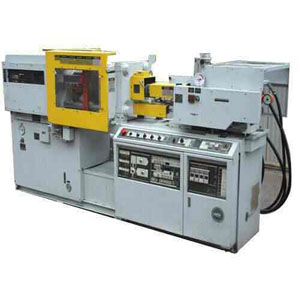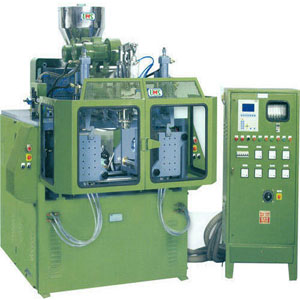Milling Machine is a machine tool that performs rotating movement. The milling machine is perhaps most used in manufacturing ventures after the lathe machine. In any case, For the situation of lathe machine tools, the tools used there single-point cutting tools but For the situation of this machine, the tools used is multi-point cutting devices. This machine is a course of metal-eliminating the workpiece goes through the rotating multipoint shaper. This machine can hold each or more cutters in turn and pivots at high speed to eliminate the metal at a quicker rate. The metal removal rate is quicker when contrasted with a lathe machine. This kind of machine is used to make gears like Spur gears, and also drill the workpiece bore, and produce openings.
Milling Machine Parts
A milling machine comprises of the following parts:
- Base
- Section
- Knee
- Saddle
- Table
- Overhanging Arm
- Shaft
- Arbor
- Arbor Supports
- milling Head
- ram
So let talk about these parts in detail.
Base:
It is the base part of a machine and any remaining parts are joined on it. The base conveys the whole burden so it ought to have higher strength and it is made of solid metal.
Section:
Section is mounted upward on the base. It upholds the knee, table, and so forth, and fills in as housing for the wide range of various driving members. The segment is an empty part which contains driving pinion wheels and at times an engine for the shaft and the table.
Knee:
It is a projecting that upholds the saddle and table. All gearing mechanism is encased inside the knee. It is attached to the section by dovetail ways. The knee is upheld and changed by an upward situating screw (raising screw). The hoisting screw is used to change the knee all over by raising or bringing down the switch either with the helping hand or power feed.
Saddle:
This is set between the table and the knee and fills in as a middle of the road part between them. This can moves transitionally to the section face. This slides over the guideways arranged on the knee which is opposite to the segment face. The primary capacity is to give movement in an even bearing to the workpiece. This is made of solid iron.
Table:
This is a rectangular casting that is available on the highest point of the seat and is located over the knee. It is the piece of a machine that holds the workpiece while machining. This is made of solid iron and has T-slot cut over it. This gives vertical movement by moving the knee all over. It gives horizontal movement by the feed screw. This gives an even (cross over) movement by moving the saddle.
Overhanging arm:
The overarm is used to affixed arbor support. It might comprise of a couple of round and hollow bars that slide through the holes in the section. It is made of solid iron.
Axle:
The axle is the main piece of the machine which holds the tool perfectly positioned. This spindle provides the drive for arbors, cutters, and connections used on a machine.
Arbor:
This is a mechanical part, which is used as an expansion part of the axle in a level plant machine. It is fitted on the axle at whatever point it\’s required. This holds the tool and moves it in the right bearing.
Arbor Supports:
There are by and large two kinds of arbor upholds used in the mill machine. The first has a little width bearing hole, 1-inch in greatest distance across, and the other one has a huge breadth bearing hole, generally up to 23/4 inches. The arbor support has an oil repository that greases up the bearing surfaces. It tends to be braced anyplace on the overarm. The arbor support is used uniquely in the flat sorts of mill machines.
Milling head:
It is the upper segment of an upward mill machine. It comprises of an axle, a driving engine, and other mechanisms.
Ram:
One end of the arm is appended to the section and other ends to the milling head. The ram can be moved transitionally ( in and out) on the column by a hand switch.
Milling Machine Types
The kinds of milling machines are as follows:
- Section and Knee Type Milling
- Vertical Milling
- horizontal Milling
- universal milling
- Fixed Bed Milling
- Simplex Milling
- Duplex Milling
- Triple Milling
- Planer Milling
- CNC Milling
- Tracer Milling
Section and knee type milling machine:
It is an extremely normal machine type. In this machine, an upward section is appended to the bed which comprises of all stuff drives which pivot the knee and saddle. A knee is located on the base which gives vertical movement to the workpiece or which goes all over. A saddle is joined to the upper part of the knee which can move in the cross over heading.
Vertical processing machine:
The shaft of this machine is in an upward position. No arbor is needed in this machine. The shaper tool has the round and hollow shape and the cutting edges are located at the periphery of the round and hollow face.
Horizontal milling machine:
As the name suggests, the axle is located horizontally. The axle turns horizontally. An arbor is joined to the machine which holds the round and hollow circle shape cutter which cuts the metal workpiece.
Universal milling machine:
The milling machine, besides there is a course of action of swings up the table to 45 degrees in one or the other direction.
Fixed bed milling machine:
In this kind of machine, the bed of the machine is fixed to the machine. There is no game plan of the knee and saddle which can move upward and transitionally. The worktable is directly arranged at the proper bed. The shaft of this machine is mounted on a versatile axle head. It can move in the vertical and horizontal direction and play out the cutting activity.
Simplex processing machine:
In the simplex machine, shaft head or the axle travel just in one course. Generally it goes in the upward bearing.
Duplex processing machine:
In this machine, the axle voyages both vertical and flat headings.
Trio processing machine:
In the trio machine, the axle can move in each of the three direction along the X, Y, and Z-pivot.
Planner milling machine:
The planner milling machine is used for confronting activities in large scale manufacturing. These machines are like the bed-type plant machine, aside from they can be mounted with different cutters and shaft heads to the machine. These cutters in the machines can play out the confronting activities all the while which is an extraordinary capacity.
Extraordinary processing machine:
These machines are the advanced milling machines that are created to simple milling activities as per the jobs.
Tracer processing machine:
This machine plays out all activities like, kick the bucket making the job by synchronizing the following unit. This can foster any difficult shape. This is for the most part used in the automobile and aviation ventures.
CNC milling machine:
CNC is the most milling machine which is control by a PC. It is an overhauled rendition of the bed type factory machine, in which the axle can move in each of the three directions and the table can turn 360 degrees. These all movement is powerfully controlled which is instructed by a PC. In this, any difficult math can make on it. A sketch of the workpiece is located to the PC which is cut on the workpiece by the cutters consequently.
Activities that can be acted in a Milling Machine:
There are several types of activity that can be acted in a processing machine, and those are:
- Plain Milling Operation
- Face Milling Operation
- End Milling Operation
- For Milling Operation
- T-slot Milling Operation
- Side Milling Operation
- Gear Milling Operation
- Ride Milling Operation
- Grooves Milling Operation
- Gang Milling Operation
Plain Milling Operation:
It is the activity of creating a plain, flat, horizontal, surface to the hub of turn. This activity is also known as slab milling. This activity is extremely normal and done in practically all positions. This can be completed on each milling machine.
Face milling Operation:
This machining activity is done on the surfaces which are opposite to the hub of the cutter. The activity is performed by the milling cutter mounted on the arbor of the machine.
End milling activity:
It is the process involved with delivering flat surfaces which might be horizontal, vertical, and at a point accepting worktable as a source of perspective.
Form milling Operation:
It is the most common way of machining an form (layout) made out of bends, straight lines, or totally of bends, at a solitary cut.
This activity is cultivated by used curved, inward, and corner adjusting milling cutters.
T-opening processing Operation:
It is the activity of delivering the T-slots on the workpiece by using the T-slots milling cutter.
Side milling Operation:
It is creating the flat surface on the sides of the workpiece by using a side milling cutter. The cutter is having teeth all over just as its side.
Gear cutting Operation:
It is the activity of delivering gear tooth on the stuff clear by using a structure calmed shaper in a milling machine. The cutter profile is by and large coordinated with the tooth space of the stuff.
Straddle milling operation:
It is creating the flat vertical surface on the two sides of the workpiece by using two side milling cutters mounted on a same arbor. The distance between the two cutters is changed by using a dividing collar. This is regularly used to create a hexagonal or square surface.
Grooves processing Operation:
It is the activity of delivering the section on the outer layer of the workpiece by using a saw-milling cutter or end milling cutter.
The workpiece is fixed solidly on a milling machine and fixing the end milling cutter on an arbor, by changing the profundity of cut, the work is taken care of against the cutter to cut the section on the work surface.
Gang milling Operation:
It is the machining system where at least two processing cutters are used together to perform distinctive milling activities all the while. The cutters in gang milling are mounted on the arbor.
The benefits of the Milling machine:
In the milling machine the following benefits are:
- Ideal for the development of individual pieces and little clusters.
- Equipped for creating complex shapes with the use of multi-tooth, just as a solitary point, cutting tools.
- Activity cost can be extremely unassuming given universally useful hardware and cutters are used.
Milling Machine Disadvantages:
The following disadvantages of a milling machine:
- It is more expensive than casting, cold shaping, expulsion, and so on Assuming that these cycles can give the flatness, surface completion and layered exactness needed for the part.
- For large scale manufacturing, it turns out to be financially important to use unique reason machines.
- They might cost great many dollars yet the expense is reasonable when dealing with work which is basically disposed
The use of Milling Machine:
These are the following uses of the milling machine:
- This machines used to making gears.
- Normally used to a machined level surface however can likewise deliver sporadic surfaces.
- Used to create the section or space.
- Present day factory machine cut superalloys, titanium, elastic steel to nearer resistance, a more noteworthy precision, and quicker rate.
- This machine is used to design of metal and different materials.
Find Thanks Divine Order



